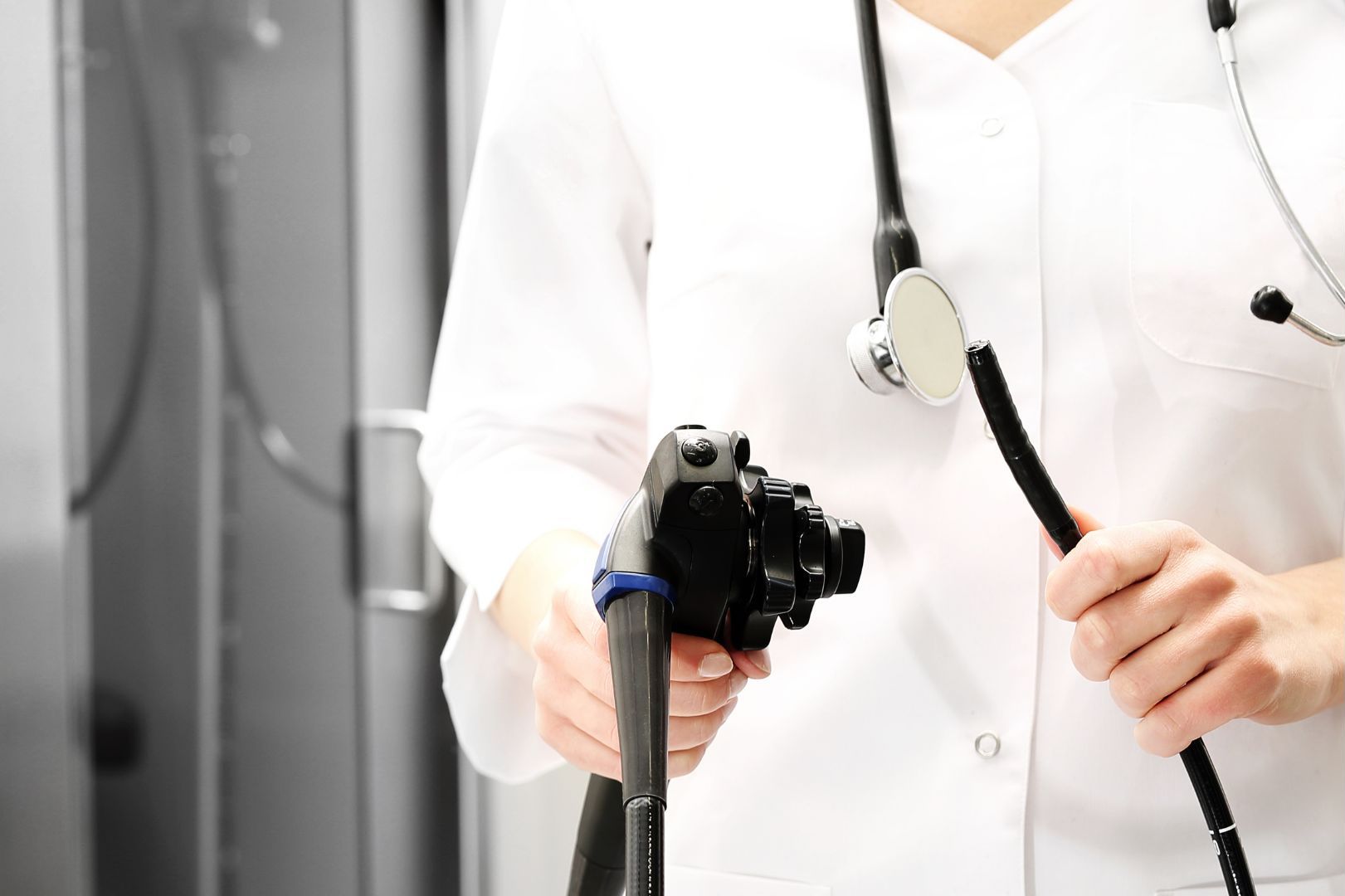Endoscopic Ultrasound (EUS)
What is Endoscopic Ultrasound (EUS)?
EUS is an advanced endoscopic technique that combines endoscopy and ultrasound. This allows the endoscopist to examine the walls of the digestive tract beyond its internal lining. Adjacent organs and structures can also be examined including the pancreas, bile ducts, liver and gallbladder. EUS also allows the endoscopist to pass instruments through the echoendoscope into the structures beyond the digestive tract to obtain tissue samples or to perform various interventions. EUS is the most accurate and safest way to obtain tissue samples or perform these surgical interventions.

The endoscopist passes an echoendoscope through the mouth into the digestive tract and to the intended site for examination. The echoendoscope has a built-in miniature ultrasound probe that uses sound waves to create visual images of the digestive tract wall and its adjacent organs. EUS can also be used to perform sampling and treatment such as:
- Fine needle aspiration (FNA) or biopsy (FNB): A needle is passed under EUS guidance into the area of interest to obtain cells or a tissue core for analysis. Fluid can also be withdrawn for analysis.
- Celiac axis treatment: EUS allows precise injection of medication into the celiac axis to control pain and subsequently mediated by this important nerve bundle.
- Cancer treatment: EUS can be used to place markers (fiducials) into cancers to enable accurate and safe (stereotactic) radiotherapy. EUS can also be used to inject medication or alcohol accurately into cancers for treatment.
- Metal stent placement: EUS can be used to place a special stent that joins 2 spaces together. This is often done for pancreatic pseudocyst treatment but can also be performed to drain the bile duct through the stomach or duodenum.
EUS is most commonly used for:
- Evaluation and sampling of submucosal masses in the digestive tract, cysts and masses in adjacent organs such as the pancreas and lymph nodes.
- Evaluation of the bile ducts for stones and strictures. EUS is the only modality that can accurately detect very small stones.
- Evaluation for chronic pancreatitis when other radiologic tests are inconclusive.
- Staging of digestive cancers, including pancreatic, bile duct, stomach, oesophagus and rectal cancers.
- Celiac plexus treatments such as nerve blocks to manage pain from pancreatic cancer or chronic pancreatitis.
- Drainage of fluid collections and complications of pancreatitis.
You should fast for at least 6 hours prior to your EUS. You may drink clear fluid up to 2 hours before the procedure.
In general, most medications should be continued before an EUS with the exception of diabetes medications and blood thinners. Diabetic medications should be omitted during the fasting period. You should check with your doctor if your blood thinners may be omitted before the procedure.
You will be given medication to make you sleepy before commencing the procedure. Hence, you must not drive, work or make any important decisions after the procedure. A Medical Certificate will be issued if needed and you should rest at home for the rest of the day.
A nurse will conduct final checks and bring you into the procedure room. An intravenous line will be inserted.
A throat spray will be administered to lessen the discomfort of the procedure. A plastic mouth piece will be placed between your teeth to protect your teeth. You will be positioned to lie on your left and sedation will be given. After you have fallen asleep, the procedure will begin. You will likely not remember any parts of the procedure. You will be breathing on your own and monitored closely during the procedure. You will wake up gradually after the procedure is done.
You will be monitored until you have recovered from the anaesthesia. The nurses will assess when you are ready for discharge and will serve you something to eat and drink. You should arrange for a family member to take discharge instructions and take you home. You should only resume working and driving the following day. It is common to have mild abdominal discomfort or bloating after a colonoscopy. This usually goes away after 24 hours. Usually, 2 days of hospitalization leave is given for the day of the procedure and the next day.
Your doctor will fix an appointment to explain the EUS procedure and findings, including the results of any samples taken. He will then discuss the appropriate management plan.
EUS is a safe examination. Complications are rare and overall occur in less than 0.1% of cases. These are often due to disease factors. Such complications include tearing of the wall, bleeding and anaesthetic complications. Unfortunately, emergency surgery or urgent hospitalization may be required. The risk may be higher in complex cases or interventional EUS and include infections and pancreatitis. Your doctor will advise you on the complications, what to watch for and what to do should these occur.
EUS is an advanced endoscopic technique. The quality and safety of EUS depend heavily on the specialist. Only a few endoscopists undergo additional years of training after specialization to perform EUS properly. There are various levels of difficulty in EUS. Most EUS specialists are able to perform routine cases such as simple diagnostic evaluation and basic FNA. However, only experts are able to perform difficult cases successfully. It is important to ensure that the doctor performing the EUS has the correct level of expertise to match the difficulty of the case.
An EUS is a hospital procedure and is covered under most hospitalization plans. It is also Medisave deductible. Many companies’ health benefits and private health insurances cover the cost of a colonoscopy, which may extend to the private sector. The Ministry of Health provides fee benchmarks and publishes the average fees in each hospital. Before any endoscopic procedure detailed financial counselling is done to help patients understand the cost breakdown. Patients should check with their insurance provider and do their own research before seeing a specialist.




